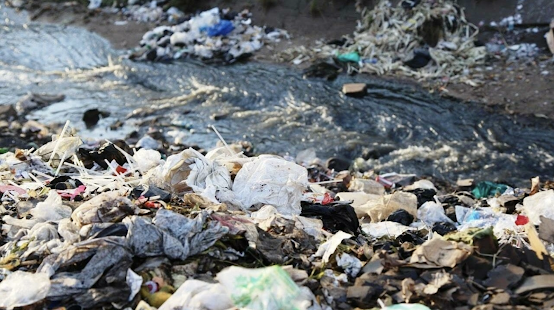Human Waste Problems in Kampala, Uganda (Part II)
This post is the second part of my article about the human waste problems in Kampala, Uganda. Please click on this link to read the first half of the article.
The Flying Toilets
Although 99% of the surveyed population reported that they have access to sanitation facilities, commonly the pit latrines, they choose not to use them. One common alternative is flying toilets. About 15% of the population said that they will use the flying toilets. Flying toilets is a practice that uses polythene bags as containers and discards after usage. Sometimes, the disposals are not properly managed. The polythene bags are randomly thrown in the open drainage. In Kulabako et al (2010)'s research about the problems and constraints existing in the urban poor areas in Kampala, the team also revealed that flying toilets can also be found on the roofs. If the households collect rainwater from roof catchments, the pathogens in human waste entered the households through the water.
Women and Children
Some practices women and children delivered implicitly result in contaminating the water in the community. As discussed, the pit latrines are shared by households in the communities. After collecting data from 1500 respondents, Tumwebaze et al (2013) found that around 93.4% of the pit latrines were shared by men and women. However, women need privacy during their menstruation period. This leads to the use of the flying toilets or other means that seems to grant them some privacy. For example, an open environment but with few human presences. But this is not to say women don't use the pit latrines at all during their menstruation. Some would still use the pit latrines. When they use the communal pit latrines, however, they would discard menstrual pads in the pit latrines. Not only finding women sanitary products but children's diapers can also be found in the pit latrines. Also, children would empty potties that contain human excreta on the pit latrine floor instead of pouring the excreta into the squat hole because they fear the big deep holes. These practices all make the pit latrines hard to clean and link back to the first factor discussed.
Security Reasons
Darkness at night is one of the factors that discouraged people to use pit latrines as well. It is unsafe for the slum dwellers to use the communal pit latrines. They will use buckets instead. The buckets, however, were not discarded properly. People will dump them around natural or artificial drainage located around the household compound at their convenience.
Conclusion
All the factors discussed above result in the contamination of the community waters. It is found that the shallow aquifers in slum areas of Kampala were majorly contaminated by the wastewater infiltration from pit latrines, and over 80% of the spring sources had detected faecal contamination even though they were protected. A large population of slum dwellers rely on these waters, both groundwater and surface water. Contamination in one site of the city might also cause problems in downstream areas as the water flows down. With the global warming trend, it is speculated more floods would occur in the tropical regions. The frequency of floods can easily spread the contaminated water, or wash the human excreta in open environment to other neighbourhoods in Kampala. In general, the improperly managed human waste problems in the urban poor areas in Kampala would cause more negative socio-economic consequences in the urban regions in near future. These can be the perceivable health problems, they can also be malnutrition and poor education. Some initiatives and managements need to be introduced.
I hope you have enjoyed this long article so far! Please leave a comment if you find anything inspiring or surprising.



I love the structure of how you described the different sanitation infrastructures that are present in Kampala, Uganda. Your explanation of the infrastructure is clear and you present the challenges of the on-site sanitation services really well. Maybe you could include images of pit latrines etc as a visual representation may make it easier to understand its uses and challenges when you explain.
ReplyDeleteThank you, Gina! I'll source some images and update them later :)
DeleteThe challenge of sustaining on-site sanitation systems like pit latrines is well described - well done. The suggestion of 99% access to sanitation suggested by the first cited study is curious as it is inconsistent with UNICEF-WHO surveys outlining much lower proportions of the population, and slum dwellers in particular, to sanitation. Might they be using different criteria to define access?
ReplyDeleteThank you for raising up the question. I looked into the research - it didn't define the criteria. I believe this might due to the sample population. The sample was drawn from 1,500 respondents living in 50 randomly selected slum zones in the five divisions of Kampala. UNICEF-WHO might capture a wider population.
Delete